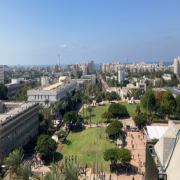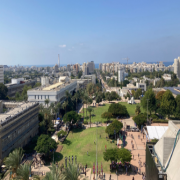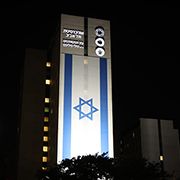Research to cool down your summer
The heat is here, the humidity's rising, so here are some scientific studies to cool down your brain and refresh your mind
It comes every year, like clockwork. Sometimes a little earlier, sometimes a little later, but ultimately it’s punctual like any part of mother nature, and it’s finally here now: the heat of July-August in Israel.
Along with the air conditioners, electric fans and paper fans that have made a comeback in recent years, we thought it couldn’t hurt to add some cool thoughts to refresh your minds. So here are some studies and research projects being carried out at Tel Aviv University that lower the temperature to sub-zero.
Cosmic radiation on Mount Hermon
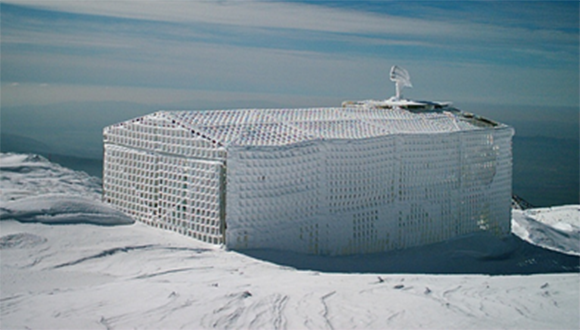
Genome on ice
The lowest temperature on Mount Hermon does not go far below the freezing point on the Celsius scale, but in the labs on campus things can be frozen at temperatures of hundreds of degrees below zero. In the laboratory of Prof. Tamir Tuller of the Faculty of Engineering at TAU, researchers are developing methods to decode the rhythm the intracellular complexes called ribosomes travel on the genetic material and translate it into the building blocks of proteins needed by all cells. To decipher their tempo, one must first 'freeze' their movement at a certain point in time, and analyze their densities along the genetic material.
The researchers halt all the ribosomes in the cell at a given time (an order of 105 - 106 ribosomes) by combining a chemical that stops the ribosome activity and freezing at a temperature close to minus 196 degrees Celsius. Next, based on the results of the experiment, computational methods and innovative algorithms are used to decode the ribosomes' movement at the resolution of single nucleotides - the building blocks that make up the genetic material (RNA and DNA).
The information obtained by researchers is essential for the development of novel methods of vaccine generation, the understanding of cancer mutations that will lead to the development of relevant therapies and medicines, the development of efficient plant engineering methods and, generally, a better understanding of the factors influencing evolution and cell activity.

Making a breeze
In the Israeli summer, a chilly breeze, natural or artificial, can make the stay outside a bit more tolerable at noon. But what about wind with the power of a hurricane? The wind tunnel in the aerodynamics lab at the Faculty of Engineering is a closed-circuit corridor that is 30 meters long and where the wind speed is so significant and powerful it can reach as much as 200 km/h, which is similar to a third-stage hurricane.
“Wind tunnels are designed to simulate different flight conditions in an optimal manner and allow the isolation and control of parameters for research purposes," explains Prof. Avi Seifert, head of the aerodynamics laboratory at the School of Mechanical Engineering. "One of the most important principles in engineering science is a controlled experiment that can be repeated under the same conditions - speed, temperature and pressure." The advantage of a wind tunnel is that the same conditions can be repeated over and over again, controlling for each parameter."
In the wind tunnel, researchers examine the impact of insects on aircraft in the air, the impact of dust, rain and ice accumulation on aircraft and more. Further studies are being conducted in the laboratory aimed at improving parts of aircraft, vehicles and even wind turbines. For this purpose, we have cooperated with companies such as Airbus, all aeronautical industries in Israel and even the US Army, and of course with universities from Europe and the US, such as Stanford.
Prof. Seifert in the wind tunnel, the aerodynamics laboratory
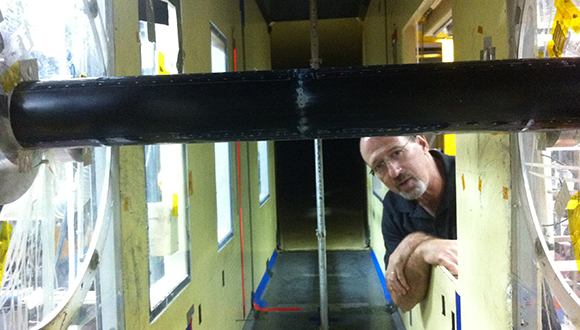
Furry ice cream
In the I. Meier Segals Garden for Zoological Research of Tel Aviv University, you will not find penguins and polar bears, because its inhabitants are local animals, naturally adapted to the warm days. The cages in the garden are naturally organized to accommodate the weather, with sunny and shaded areas, but still, how can animals be made more comfortable during the worst of the summer heat?
According to Dr. Ron Elazari-Volcani, chief veterinarian of the TAU Zoological Garden, "On hot days, we combine spraying with a water hose and wetting the cage, hanging up shading nets, climber plants, such as grape vines, that let through the sun in winter and provide shade in the summer. For certain animals, we allow them to dig holes in the ground, which is chillier, or take a dip in the pools. "
And what about cool summer treats? "Sometimes we make ‘popsicles’ for the animals, but it's more of a fun treat than a real strategy to cope with the heat. In the wild animal spends a lot of their day searching for food, so in an environment where food is procured for them it’s important to provide “enrichment” to allow them to lead fuller lives instead of being bored. Creating popsicles for them more a part of enrichment, not our main way of keeping them cool,” Ron concludes.



